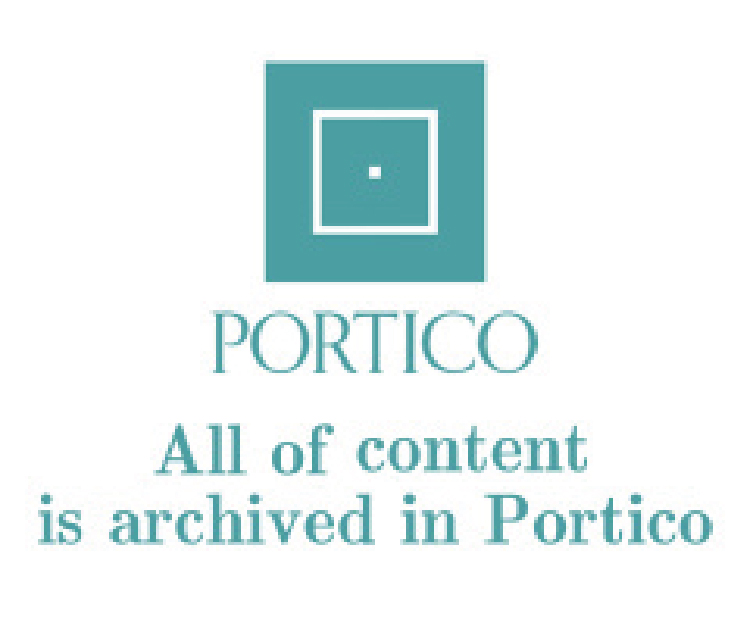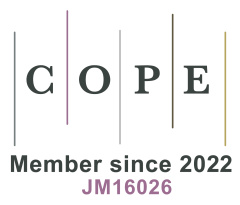Research on the innovation framework of cultural tourism education integrating molecular biomechanics and digital technology—A two-way path based on immersive experience and talent training
Abstract
The global cultural tourism industry is undergoing a paradigm shift towards a digital-physical hybrid space. Existing technologies have systematic defects in multimodal perception restoration and interdisciplinary talent training. This study proposes an innovative framework of “Biomechanics-Driven Design (BDD)”, which aims to optimize the immersive experience and reconstruct the cultural tourism education system through the deep integration of molecular biomechanics and digital technology. In theory, a tactile feedback dynamic model is constructed based on the Hertz contact theory, and the equivalent elastic modulus (E*) and surface roughness (Ra) parameters of cultural relics are quantified. The multimodal intelligent modeling of tourist movement behavior is realized by combining OpenSim dynamic simulation. The “Cultural Folding Algorithm (CFA)” is proposed in the technical architecture. Through semantic similarity calculation and spatial topology adaptive reconstruction, a “culture-space” coupling model of the metaverse scene is established. Experimental verification shows that the tactile enhancement scheme increases the tactile perception accuracy of colored sculptures to 89.2% (p < 0.001) and the retention rate of cultural information memory is increased by 63.2% (p < 0.001). The interdisciplinary education model based on BDD significantly improves the ability of technology development (+34.8%, p < 0.001) and the depth of cultural interpretation (+39.8%, p < 0.001). The research breaks through the perception bottleneck of traditional VR/AR equipment, builds a curriculum matrix integrating biomechanics and digital technology, and shortens the development cycle of digital cultural tourism products. The research also provides a scientific methodology for the dynamic interactive protection of cultural heritage and the construction of the metaverse education ecosystem. At the same time, it provides scientific support for the digital protection of cultural heritage and the transformation of the cultural tourism education paradigm. Future research needs to deepen the self-optimization algorithm of biomechanical parameters and the distributed metaverse collaboration mechanism to promote the improvement of the theoretical chain of “mechanical laws-digital narrative-cognitive experience”.
References
1. Tian M, Zhang H, Zhang Y, et al. Analyzing the Progress in Chinese Tourism Research over the Past Decade: A Visual Exploration of Keywords and Delphi Surveys. Sustainability. 2024; 16(11): 4769. doi: 10.3390/su16114769
2. Buckley R, Kozak M, Wen J, et al. Revitalizing tourism research. Annals of Tourism Research. 2025; 112: 103946. doi: 10.1016/j.annals.2025.103946
3. González-Rodríguez MR, Díaz-Fernández MC, Dias ÁL. Entrepreneurship and innovation in tourism: Examining immersive technologies, virtual reality, and augmented reality. In: Handbook of Tourism Entrepreneurship. Edward Elgar Publishing; 2024. pp. 411-425.
4. Clemente F, Valle G, Controzzi M, et al. Intraneural sensory feedback restores grip force control and motor coordination while using a prosthetic hand. Journal of Neural Engineering. 2019; 16(2): 026034. doi: 10.1088/1741-2552/ab059b
5. Zhou Y. Museum Digital Repatriation and Case Studies: Exploring Guidelines for the Future Practice and Digital Bridge to Cultural Continuity. Georgetown University; 2024.
6. Pietroni E, Ferdani D. Virtual Restoration and Virtual Reconstruction in Cultural Heritage: Terminology, Methodologies, Visual Representation Techniques and Cognitive Models. Information. 2021; 12(4): 167. doi: 10.3390/info12040167
7. Abiri A, Pensa J, Tao A, et al. Multi-Modal Haptic Feedback for Grip Force Reduction in Robotic Surgery. Scientific Reports. 2019; 9(1). doi: 10.1038/s41598-019-40821-1
8. Guo K, Fan A, Lehto X, et al. Immersive Digital Tourism: The Role of Multisensory Cues in Digital Museum Experiences. Journal of Hospitality & Tourism Research. 2021; 47(6): 1017-1039. doi: 10.1177/10963480211030319
9. Zhang L, Zou L, Shi M. Immersing and Perceiving in Tourism Scenarios: The Interaction Mechanism between Digital Technologies and Tourists. In: Proceedings of the 2024 IEEE 24th International Conference on Software Quality, Reliability, and Security Companion (QRS-C). pp. 1292-1301. doi: 10.1109/qrs-c63300.2024.00168
10. Egeli GZ, Kurgun H. Wearable technologies: Kinesthetic dimension in enriching tourist experience. University of South Florida (USF) M3 Publishing; 2021.
11. Chen X, Wu HC, Cheng D. The Influences of Immersive Sensory Cues on Immersive Experience Recommendation Intentions in a Digital Exhibition: A Cognitive‐Affective‐Conative Model. Event Management. 2025; 29(2): 131-148. doi: 10.3727/152599524x17229013810202
12. Yuan JH, Cheng SZ, Pei LD. Research on Negative Experience Factors and Mechanisms of Suzhou Classical Gardens: Based on Tourist Perception Data. Southern Architecture. 2024; (7): 80-89.
13. Zhang L. Digital protection of dance of intangible cultural heritage by motion capture technology. In: International Conference on Cognitive based Information Processing and Applications (CIPA 2021). Singapore: Springer Singapore; 2021. pp. 429-436.
14. Huang X, Chelliah S. Big Data in Tourism: A Bibliometric Analysis (2014-2024). Journal of Accounting, Business and Management (JABM). 2024; 32(1): 62. doi: 10.31966/jabminternational.v32i1.1454
15. Yu J, Wang Q, Chen H. Application of Kinect-based Motion Recognition Algorithm in Cultural Tourism. In: Proceedings of the 2018 VII International Conference on Network, Communication and Computing. pp. 307-311. doi: 10.1145/3301326.3301377
16. Yang R, Abidin SZ. Research on the dissemination and application of computer 3D technology in the process of intangible cultural heritage display. In: Proceedings of the 2022 IEEE 2nd International Conference on Electronic Technology, Communication and Information (ICETCI). pp. 1339-1342. doi: 10.1109/icetci55101.2022.9832213
17. Cuomo MT, Tortora D, Foroudi P, et al. Digital transformation and tourist experience co-design: Big social data for planning cultural tourism. Technological Forecasting and Social Change. 2021; 162: 120345. doi: 10.1016/j.techfore.2020.120345
18. Yang LG, Ning WF. Paths of digital intelligence driving the integration of culture and tourism in traditional villages: from a structuralist perspective. Economic Geography. 2024; 44(12): 218-227.
19. Ponsignon F, Derbaix M. The impact of interactive technologies on the social experience: An empirical study in a cultural tourism context. Tourism Management Perspectives. 2020; 35: 100723. doi: 10.1016/j.tmp.2020.100723
20. Han L, Afzal N, Wang Z, et al. Ambient haptics: bilateral interaction among human, machines and virtual/real environments in pervasive computing era. In: CCF Transactions on Pervasive Computing and Interaction. Springer; 2024. doi: 10.1007/s42486-024-00166-9
21. Chen J. Optimization of international talent training program in biological and biomechanical field of Shaanxi universities by integrating Transformer-GRU model under the “Belt and Road” initiative. Molecular & Cellular Biomechanics. 2025; 22(2): 1021. doi: 10.62617/mcb1021
22. Zhang Y, Papp-Váry Á, Szabó Z. Digital Engagement and Visitor Satisfaction at World Heritage Sites: A Study on Interaction, Authenticity, and Recommendations in Coastal China. Administrative Sciences. 2025; 15(3): 110. doi: 10.3390/admsci15030110
23. Zhang Q, Li Y. Innovative design of digital neural network-based biodata integration technology in cultural tourism management: Insights from cellular molecular biomechanics perspective. Molecular & Cellular Biomechanics. 2025; 22(1): 981. doi: 10.62617/mcb981
24. Zhang Y, Ge MT, Dong MB, et al. The impact of human-computer interaction on landscape perception in the context of digitalization. Landscape Architecture. 2022; 29(9): 48-54.
25. Melo M, Coelho H, Gonçalves G, et al. Immersive multisensory virtual reality technologies for virtual tourism. Multimedia Systems. 2022; 28(3): 1027-1037. doi: 10.1007/s00530-022-00898-7
26. Li X, Zhu H. Research on the cultivation of interdisciplinary and complex talents for the cultural tourism integration in the new era. Forest Chemicals Review. 2022; 34-46.
27. Su Q. Culture and tourism industry in the context of “smart tourism” on the cultivation of high quality talents. MATEC Web of Conferences. 2024; 395: 01029. doi: 10.1051/matecconf/202439501029
28. Wei A. Research on Interdisciplinary Digital Talent Cultivation Path of Tourism Management Major Specialties. Journal of Education and Educational Research. 2023; 6(2): 92-96. doi: 10.54097/jeer.v6i2.14969
29. Liu G, Li X. Research on Cultural Embedding in the Cultivation of Tourism Management Professionals. Journal of Landscape Research. 2023; 15(6): 91-94.
30. Chen X, Yu S. Synergizing Culture and Tourism Talents: Empowering Tourism Enterprises for Success. Journal of the Knowledge Economy. 2023; 15(3): 12439-12471. doi: 10.1007/s13132-023-01598-x
31. Shi M. Cultivation Mode of Innovative Tourism Talents in Colleges and Universities. International Journal of Management Science Research. 2023; 6(5): 1-8.
32. Gu S. Research on Talent Cultivation Mode of “Tourism Management Major” in Chinese Universities under the Background of Integration of Industry and Education. International Journal of Social Science and Education Research. 2023; 6(5): 253-264.
33. Zhan Y. The Talent Cultivation Model of Study Travel Majors in Universities Based on the Internet of Things and Deep Learning. IEEE Access. 2024; 12: 190678-190689. doi: 10.1109/access.2024.3514306
34. Luo QX, Liu TY, Zhang YY. Research on the construction model of the five-in-one (IDSSIG) of the modern smart tourism industry college. College and Job. 2024; 13: 1791.
35. Liu F, Wan g C, Kang J. Exploration and thinking on the training of new business applied talents under the background of digital economy: Take tourism management as an example. Journal of Human Resource Development. 2023; 5(3). doi: 10.23977/jhrd.2023.050307
36. Wu WW. Intangible cultural heritage tourism product development and innovative talent training strategies for tourism majors in applied universities. Journal of Educational Research and Practice (JERP). 2025; 1(2): 14-17.
37. Wu P. Analysis on the Innovative Application of Industry-University-Research Collaborative Education Mode. In: Proceedings of the 6th International Conference on Arts, Design and Contemporary Education (ICADCE 2020). doi: 10.2991/assehr.k.210106.055
38. Qu SN, Liang HY. Emerging digital technologies empowering new quality productivity: core mechanisms and main paths. Technological Economy. 2025; 44(2): 58-66.
39. Zhang L, Hu F. Research on Talent Cultivation of Local Product Design Professionals Based on Cooperative Education. Advances in Education, Humanities and Social Science Research. 2024; 11(1): 33. doi: 10.56028/aehssr.11.1.33.2024
40. Mu P, Seo M, Khiaomang K. Exploration and Practice of the Collaborative Innovation Model of Chu Culture Lacquerware: Industry-Academia-Research Cooperation. Journal of Arts and Thai Studies. 2024; 46(2): E2730.
41. Wang JW, Lu L, Wang ZF, et al. New productivity empowers high-quality development of tourism: theoretical connotation and scientific issues. Journal of Natural Resources. 2024; 39(7): 1643. doi: 10.31497/zrzyxb.20240709
Copyright (c) 2025 Author(s)

This work is licensed under a Creative Commons Attribution 4.0 International License.
Copyright on all articles published in this journal is retained by the author(s), while the author(s) grant the publisher as the original publisher to publish the article.
Articles published in this journal are licensed under a Creative Commons Attribution 4.0 International, which means they can be shared, adapted and distributed provided that the original published version is cited.



 Submit a Paper
Submit a Paper
